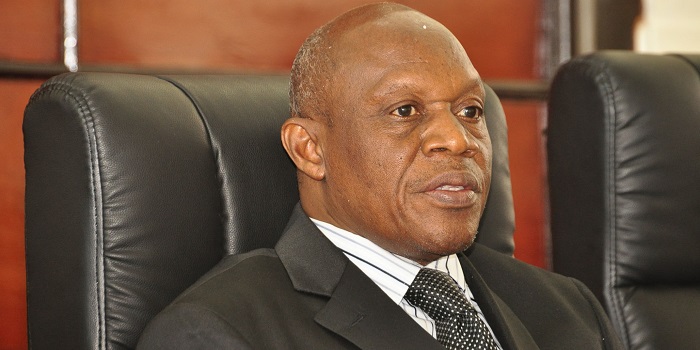Ghana’s Banking Crisis: The Deposit Protection Angle
The recent collapse of 7 commercial banks has generated a lot of interest and discussions. In spite of these discussions, not much has been said about the deposit protection angle to this matter. This article, therefore, considers the role of a functional deposit protection scheme in averting a banking crisis and taking care of the needs of the needs of depositors in the event where there is one.
On a general level, deposit protection schemes are meant to reduce the risk of loss of savings by bank depositors; provide depositors with immediate relief if a bank fails (since depositors should not be made to wait for the conclusion of the insolvency proceedings before they are paid); and to reduce panic risk. After all, depositors will not withdraw their monies if they feel and know that their monies are safe. A deposit protection scheme will usually define the eligible claimants, the eligible claim, the procedure to be followed in making a claim, and the limits on the compensation amounts.
Ghana’s deposit protection scheme (like those of many other jurisdictions) is designed to protect small depositors from losses that the depositors may suffer as a result of the depositor’s financial institution going under (i.e. in the event where the bank’s license is revoked or a liquidator is appointed over the assets of the bank). According to the Ghana Deposit Protection Act, 2016 (Act 931), Depositors with banks cannot recover more than GHS6,250 of whatever amount they had in their accounts. And in the case of specialized deposit-taking institutions, a depositor cannot recover more than GHS1,250. The coverage limits are expected to be revised every three years to take account of economic conditions prevailing in the country and data concerning the development of insured deposits.
The operation of a functional deposit protection scheme was expected to operate in tandem with the Banks and Specialized Deposit Taking Institutions Act, 2016 (Act 930). That explains why these two Acts of Parliaments were passed around the same time. In so many ways, Act 931 was intended to dovetail into Act 930. The deposit protection scheme was intended to be a safety net for depositors who save their monies with the banks. Act 930 makes the membership of the Ghana deposit protection scheme a condition precedent to the issue of licences[1]. And in the same vein, when a bank’s license is revoked, the deposit protection scheme is to be notified upon the commencement of liquidation and receivership proceedings[2]. A bank or specialized deposit-taking institution is prohibited from declaring or paying dividends (whether interim or final) unless the bank can prove that it has satisfied every obligation under the Deposit Protection Act, 2016 (Act 931) and paid any outstanding premium owed the Ghana Deposit Protection Corporation[3]. Act 930 also requires the Bank of Ghana to update and inform the Ghana Deposit Protection Scheme of anytime a bank is on the verge of failing.
Specifically, the Bank of Ghana is required to notify the Ghana Deposit Protection Corporation immediately the Bank of Ghana initiates remedial measures[4]or corrective action against a bank or specialized deposit-taking institution[5]. The Deposit Protection Corporation is also to be informed anytime an official administration[6]or receivership is commenced[7].
A functional deposit protection scheme has practical benefits for the depositor. This is because a depositor whose deposits are insured has priority over an uninsured depositor when it comes to the order in which payment is to be made[8]. Where a bank or specialized financial institution is liquidated under Act 930, claims are paid in the following order: (a) expenses incurred by the receiver and the Bank of Ghana; (b) payments made by the institution responsible for deposit protection in respect of insured deposits; (c) credits extended to the bank or specialised deposit-taking institution; (d) statutory amounts owed to the government or to a municipality; (e) wages and salaries of employees; (f) credits extended to bank or specialized deposit-taking institution after appointment of receiver; (g) deposits not covered under (b).
From the priority ladder outlined above, it is clear that the deposit protection scheme, first of all, makes payment to insured depositors in line with Act 931; and then stands in the stead of these insured depositors to recover whatever amount that the deposit protection scheme has given to the insured depositors. It is obvious that the absence of a functional deposit protection scheme radically changes the hierarchy and order in which uninsured depositors’ interests are to be catered for.
In the case of all the 7 collapsed banks, the Central Bank could not take advantage of the deposit protection safeguards because the structures were not in place. Rather the Central Bank has resorted to (a) a purchase and assumption agreement; and (b) a bridge institution to secure the interest of the depositors. A Purchase and Assumption Agreement involves the transfer of deposits and liabilities from an ailing bank to a healthy one. A bridge institution is one established as a caretaker bank to stand in the gap between the time that an ailing bank improves and the time when a buyer is found for its assets. But these two options require a lot of public sector investments which could have been channelled into other profitable activities.
As it stands now, the Government of Ghana and the Bank of Ghana have invested close to GHS 7 billion in order to keep the deposits and investments of the public safe. If the deposit protection scheme were in full force, then certainly the cost of shoring these weak banks would have been significantly lower. Further, it would have been way easier for banks to be allowed to fall on their own swords. After all, there is comfort in the fact that the depositors’ sums which have been insured will be taken care of.



